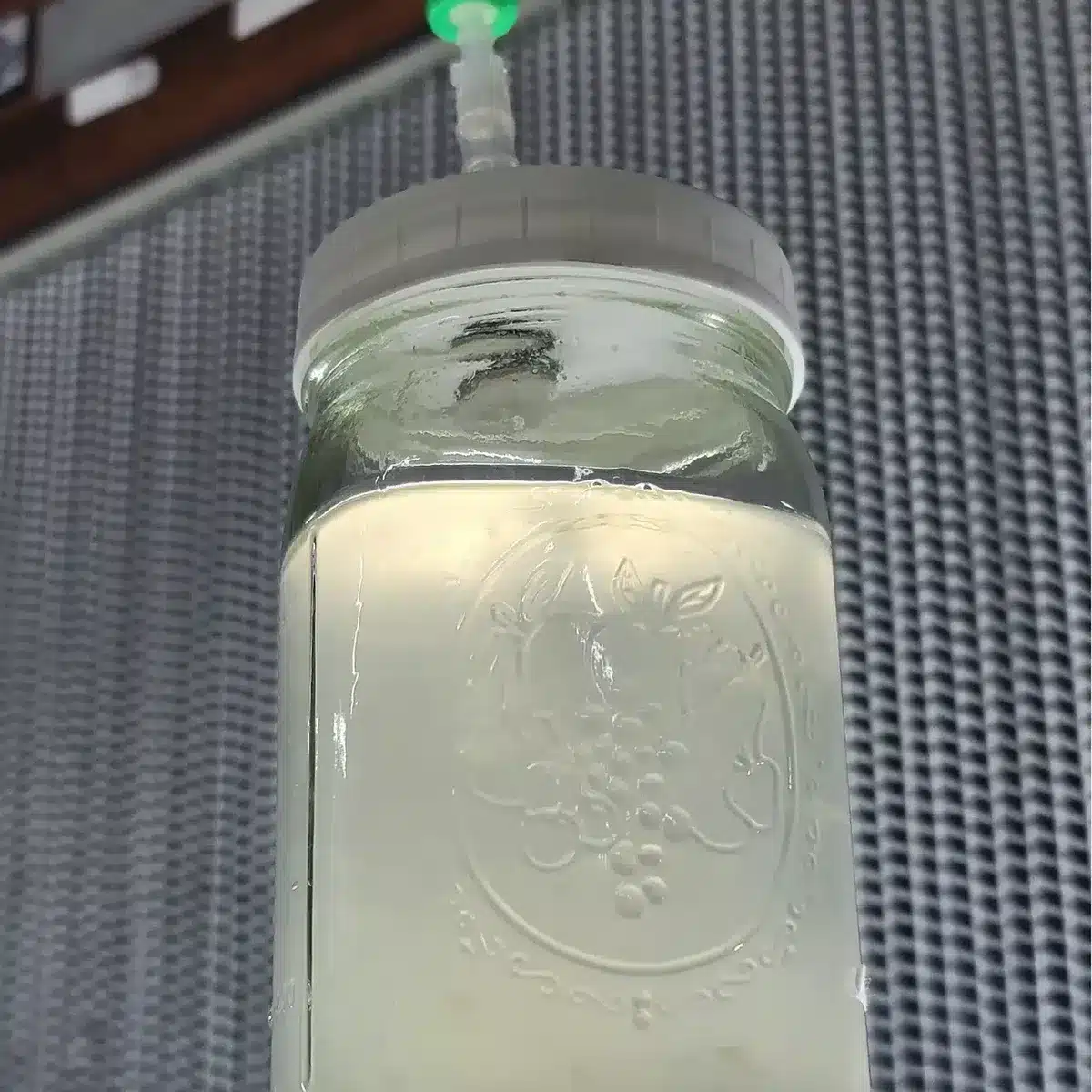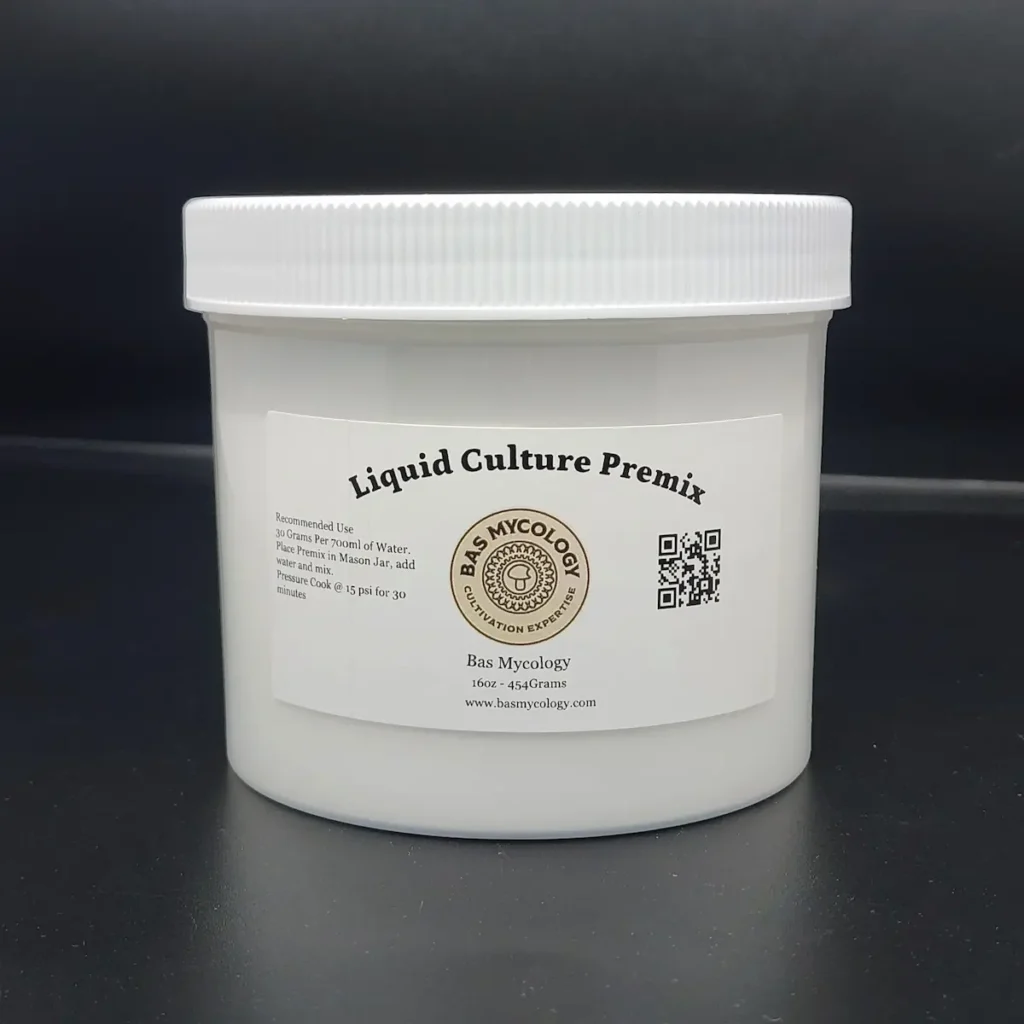How Use Liquid Culture Premix in 6 Easy Steps
Supplies You’ll Need
Liquid Culture Premix
Digital Scale & Scoop
Mason Jar with LC-Modified Lid
Magnetic Stir Rod & Stir Plate
Presto Pressure Canner (or equivalent)

Step 1: Prepare Your Jar
– Add 700 mL of water to a clean mason jar.
– Drop in a magnetic stir rod. This helps break up mycelium during growth, ensuring even expansion and faster colonization.
Note: While a stir rod is ideal, a clean, solid object can be used if needed — but results may vary.
Step 2: Add the Premix
– Weigh 30 grams of Liquid Culture Premix.
– Add it directly to the jar of water.
Tip: Swirl gently to begin dissolving before sealing.
Step 3: Seal & Cover
– Tighten the LC lid onto your jar.
– Cover the lid with aluminum foil to prevent contamination during sterilization.
Step 4: Sterilize
– Place the jar in a Presto Pressure Canner.
– Sterilize at 15 PSI for 30 minutes.
This fully sterilizes the broth and minimizes caramelization.
Step 5: Cool & Stir
– Let the jar cool for at least 1 hour.
– Place it on a magnetic stir plate to mix while it reaches room temperature.
Proper mixing ensures nutrients are evenly distributed and the broth stays clear.
Step 6: It’s Ready to Use
Once fully cooled, your liquid culture is ready.
Use it to expand a clean mycelial culture or inoculate agar plates.
Inside the Broth: What Makes Our Premix Different
Traditional LC recipes use ingredients like honey, dextrose, or malt extract. Bas Mycology’s LC Premix improves on these with:
- Balanced sugars for even energy release
- Bioavailable amino acids
- pH buffers to stabilize storage
- Low-sediment clarity for easier syringe pulls
This proprietary blend reduces caramelization, holds pH longer, and produces clean, high-performing broth for all fungi — gourmet, medicinal, or otherwise.
What Is Liquid Culture?
Liquid culture (LC) is a sterile, nutrient-rich solution — typically water infused with sugars, amino acids, and trace minerals — designed to support the rapid growth of fungal mycelium in suspension.
Unlike agar, LC remains fluid, allowing the mycelium to float and grow in 3D. When stirred or shaken, it breaks into tiny fragments that multiply rapidly, forming dense clouds that can be drawn into syringes for inoculation.
Why Cultivators Rely on Liquid Culture
– Speed
LC syringes colonize grain faster than spore-based methods — reducing contamination risk and shortening turnaround times.
– Consistency
Because LC uses cloned mycelium, every jar or block receives identical genetics, ensuring predictable results in yield, shape, and timing.
– Scalability
A single 10cc syringe can be expanded into liters of LC or dozens of grain jars, keeping costs low and production efficient.
– Diagnostic Clarity
Contamination is easier to spot in liquid — cloudiness, discoloration, or odor are all red flags. Always test LC on agar before using it on grain.


Commercial Efficiency with Liquid Culture
For commercial cultivators, pairing LC with peristaltic pumps allows for fast, sterile inoculations at scale. Bas Mycology partners with farms and labs to streamline production workflows using our optimized premix, reducing labor and boosting output.
The Bottom Line
Liquid culture is a foundational tool for modern mycology. It’s fast, reliable, and scalable. When paired with optimized media, like Bas Mycology’s LC Premix, it gives growers a powerful advantage from the very first injection
